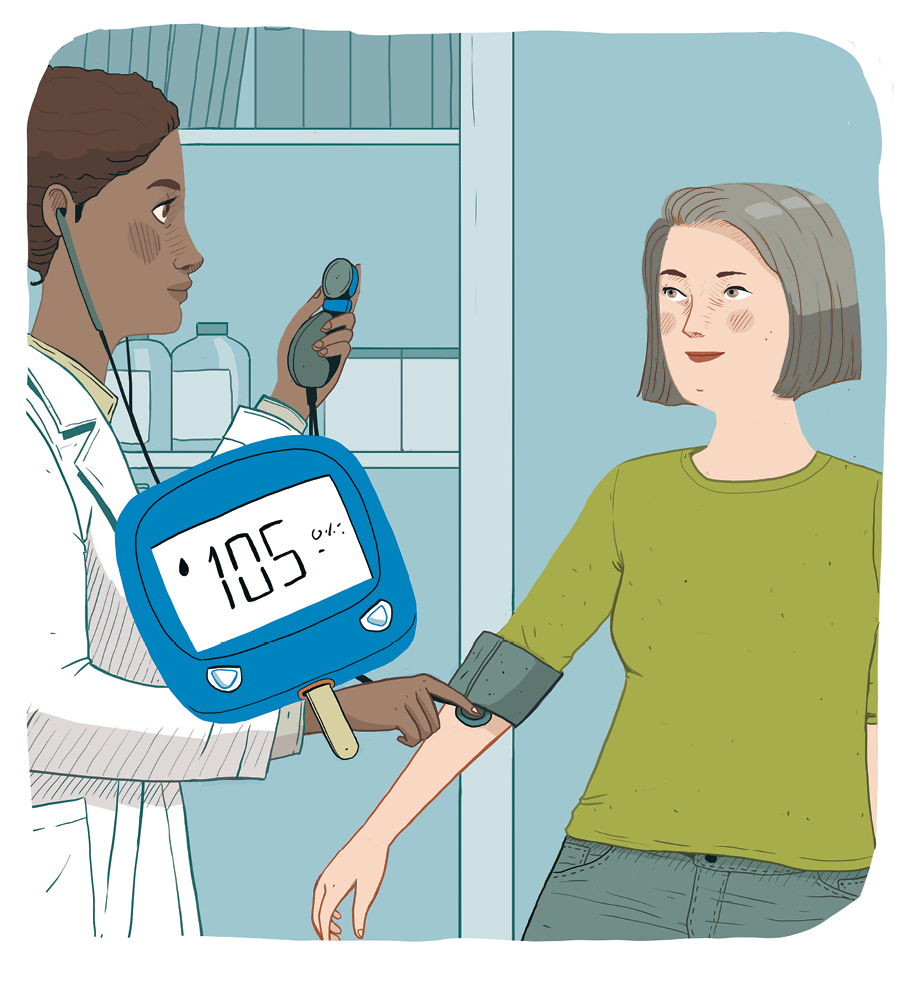If you’re suffering from a chronic condition, or experiencing symptoms that might indicate one, you’re not alone. About 117 million people in the U.S.— roughly half of all adults—had one or more chronic health conditions as of 2012, according to data from the Centers for Disease Control and Prevention. Coping with symptoms and lessening the impact of chronic diseases is a daily challenge for many, but it’s still possible to live a full, happy life and improve your health along the way. Here are four of the most common ailments, their symptoms, and ways to address them.
CHRONIC PAIN
Chronic pain is pain that lasts longer than three months or that lingers longer than is normal for a given condition, injury, or ailment, says Dr. Edward Michna, director of the Pain Trials Center at Brigham and Women’s Hospital in Boston and director-at-large for the American Pain Society. “We try to divide it into pain that comes from nerves, which is neuropathic pain, pain that comes from organs, which is called visceral pain, or pain that comes from muscles or bones, which is called somatic pain,” Michna says. More than 100 million people in the U.S. suffer from chronic pain.
Symptoms
The duration of the pain is the critical factor, Michna says. If you have exceeded the length of time during which a doctor told you to expect pain for any given operation or ailment, or if your physician cannot explain why you are having pain symptoms, it is time to consult a specialist.
Treatment
“Chronic pain is a very difficult medical problem. It requires a multifaceted, multi-modal approach to do the best job in treating it,” Michna says. In general, he says, you want to use the therapy that has a proven track record, but has minimal side effects, and go from there. Your physician might start with a physical therapy regimen or over-the-counter medicines. Treatment might involve the use of psychological support, a wide range of prescribed medication, or even surgery or injection therapies. It is important, Michna says, for patients to keep an open line of communication with their doctors about their symptoms and to understand expectations.
PERIPHERAL ARTERY DISEASE
Peripheral Artery Disease (PAD) is most easily understood when compared with the plaque and buildup that can block coronary arteries leading to a heart attack, says Dr. Diane Treat-Jacobson, a professor in the University of Minnesota’s School of Nursing who specializes in the disease. That same buildup can happen in the arteries in the legs, preventing proper blood flow and causing pain and fatigue during walking.
Symptoms
Individuals often write off PAD as cramping, or don’t report it because the pain subsides quickly when at rest. That’s the key indicator: leg pain that intensifies when walking, but goes away quickly at rest. It is typically an ache, primarily in the calves.
Treatment
PAD puts individuals at a greater risk of heart attack and stroke, so preventing the disease from worsening through a proper diet, exercise and avoiding tobacco, is essential. The largest risk factors are smoking, diabetes, hypertension and high cholesterol. “Everybody who has this condition should be talking to their doctor about the management of risk factors,” Treat-Jacobson says. Treating the disease through exercise might sound counterintuitive for someone dealing with leg pain, but supervised exercise therapy and community-based structured exercise therapy—utilizing cycles of walk and rest—has shown to significantly improve how long people can walk before pain starts and after it has set in. Aerobic arm exercises have also shown promise. Angioplasty (surgical repair or unblocking of a blood vessel), stenting, or a revascularization procedure, such as a lower-extremity bypass, might also be offered.
DIABETIC EYE & KIDNEY DISEASES
Diabetic eye and kidney diseases are both complications of diabetes associated with chronically high blood sugar and blood pressure. The most common eye disease associated with diabetes is retinopathy, which affects blood vessels in the retina, says Dr. Rodney Hayward, professor of medicine at the University of Michigan School of Public Health. That disease can lead to diabetic macular edema (DME), which is swelling in an area of the retina responsible for sharp vision. Both retinopathy and DME can lead to impaired vision and blindness. Cataract and glaucoma are other diabetes-related eye diseases. Diabetic kidney disease results from damaged blood vessels in the kidneys, impairing the body’s ability to properly filter blood.
Symptoms
Eye disease can present itself subtly, through floating spots, blurriness, or dark spots. Any time someone notices substantial changes in vision that last more than moments, it should be questioned and checked out, Hayward says. That goes for eye pain as well. Kidney disease is generally silent until it is severe, which necessitates routine doctor visits and blood and urine tests.
Treatment
Blood sugar and blood pressure control are paramount, along with following dietary guidelines associated with managing diabetes. For eye disease, annual eye exams are a must for early detection of any issues. Laser therapy has been used to successfully remove and block blood vessels that shouldn’t be over visual fields, Hayward says. If done early, the procedure is almost routine, but it gets more difficult as disease severity increases. For kidney disease, committing to annual nephropathy screenings will aid in early detection. Certain types of blood pressure medicines—angiotensin-converting enzyme (ACE) inhibitors or angiotensin II receptor blockers (ARBs)—can provide some benefit for individuals with kidney disease.


